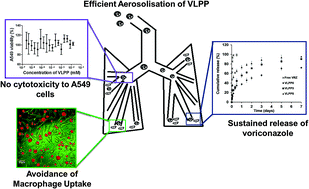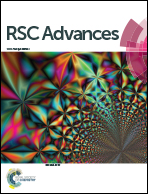Development of voriconazole loaded large porous particles for inhalation delivery: effect of surface forces on aerosolisation performance, assessment of in vitro safety potential and uptake by macrophages†
Abstract
The present study investigated the development of a dry powder inhalable formulation of voriconazole (VRZ) using quality by design (QbD) principles and assessment of its suitability for administration in the lungs. VRZ loaded large porous particles (VLPP) were extensively optimised using I-optimal design investigating the four factors (polymer type, porogen concentration, drug loading and homogenisation speed) at three different levels. Formulations were evaluated for desirable critical quality attributes (CQAs) such as particle size, drug entrapment efficiency, aerodynamic performance, porosity, surface energy, in vitro drug release, macrophage uptake and safety. A design space satisfying all CQAs was identified only in the case of VLPP fabricated from poly-lactide polymer (PLA). Statistical analyses suggest that all the factors and their higher order interactions influenced the morphology and physical properties of VLPP. Optimised VLPP exhibited a VRZ loading of 4.85 ± 0.39%, porosity of 0.17 ± 0.02 and median volume diameter of 8.84 ± 0.12 μm, measured with laser diffraction. Moreover, their mass median aerodynamic diameter (2.85 ± 0.38 μm) and fine particle fraction (FPF) (27.3 ± 2.7%), as measured by an 8-stage Anderson Cascade Impactor, were suitable for pulmonary delivery. VLPP was found to sustain the release of VRZ for over 7 days. Increase in the surface energy of VLPP promoted enhanced aerosolisation. No cytotoxic and inflammatory (IL-8) effect was observed when A549 cells were incubated with VLPP. In addition, VLPP was large enough to evade macrophage uptake, thus prolonging the residence time of VLPP at the site of action. Overall, this study suggests the suitability of VLPP for targeting invasive pulmonary aspergillosis by inhalation.


 Please wait while we load your content...
Please wait while we load your content...